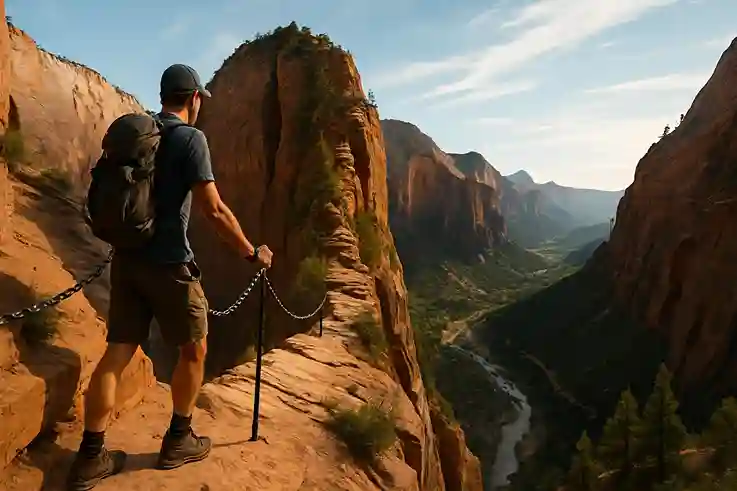The United States is home to some of the world’s most stunning and diverse landscapes, and its best US national parks showcase everything from snow-capped mountains and lush forests to dramatic canyons and rugged coastlines. Whether you’re a hiker, wildlife lover, photographer, or simply seeking a peaceful escape, there’s a park that fits your adventure. These protected lands offer endless opportunities for camping, stargazing, kayaking, and exploring. In this guide, discover the top 10 best US national parks—perfect for your next road trip, family getaway, or solo journey into nature.
Yellowstone National Park (Wyoming, Montana, Idaho)
Why Visit
Yellowstone National Park, established in 1872, is not only the first national park in the United States but also one of the best US national parks in the world. Spanning Wyoming, Montana, and Idaho, this vast wilderness is a geothermal wonderland, featuring erupting geysers, colorful hot springs, bubbling mud pots, and steaming fumaroles. Yellowstone is also a premier destination for wildlife viewing, where visitors can spot herds of bison, elk, moose, grizzly bears, and wolves roaming freely across its grasslands and forests. With over 2 million acres to explore, Yellowstone offers a rich mix of hiking, camping, scenic drives, and photography opportunities, making it a must-visit for nature lovers and outdoor enthusiasts.
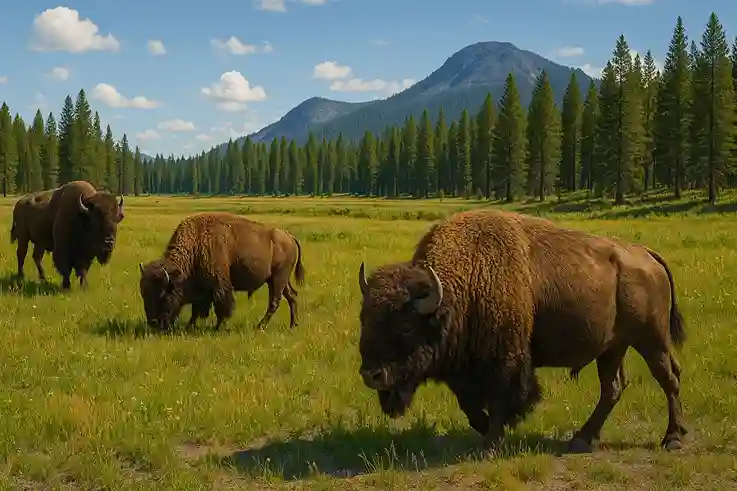
Top Attractions
Old Faithful Geyser
One of the most famous features of Yellowstone, one of the best US national parks, Old Faithful erupts approximately every 90 minutes, delighting visitors with its predictable display of geothermal power.
Grand Prismatic Spring
Located in Yellowstone, one of the best US national parks, this is the largest hot spring in the United States, famous for its vivid rainbow-like colors created by microbial life.
Yellowstone Lake
Found in Yellowstone, one of the best US national parks, this serene and expansive alpine lake offers fishing, boating, and breath-taking views for visitors seeking tranquillity and natural beauty.
Best Time to Visit
Late spring through early fall (May to September) for ideal weather and accessible roads. Winter is also popular for a quieter, snow-covered experience and guided wildlife tours.
| Attraction | Best Time to Visit | Why Visit |
|---|---|---|
| Old Faithful Geyser | Late Spring to Early Fall | Witness one of the world’s most predictable geysers erupting every ~90 mins. |
| Grand Prismatic Spring | Summer | See the largest hot spring in the U.S. with its vivid rainbow-like colors. |
| Yellowstone Lake | Summer and Early Fall | Enjoy serene alpine scenery, fishing, boating, and panoramic views. |
| Lamar Valley | Early Morning (Spring/Summer) | Spot wildlife such as bison, wolves, and elk in their natural habitat. |
| Mammoth Hot Springs | Spring to Fall | Explore unique travertine terraces and geothermal formations. |
| Hayden Valley | Early Morning or Dusk | Ideal for wildlife viewing, including bears and herds of bison. |
| Norris Geyser Basin | Spring to Fall | Discover dynamic geothermal features and colorful thermal pools. |
2. Grand Canyon National Park (Arizona)
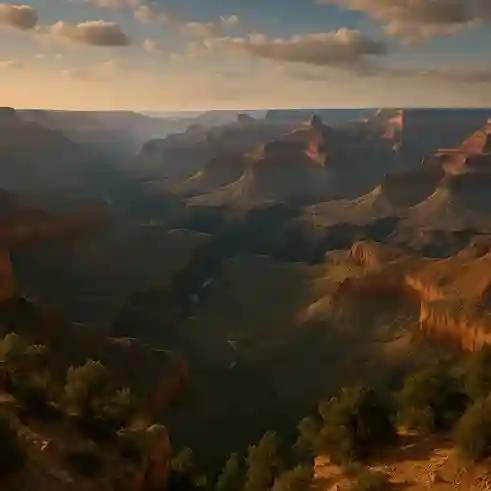
Why Visit
A true icon of the American Southwest, Grand Canyon National Park is one of the most awe-inspiring natural wonders on Earth and ranks among the best US national parks. Carved by the mighty Colorado River over millions of years, the canyon stretches 277 miles long, up to 18 miles wide, and over a mile deep—revealing layers of colorful rock that tell a story nearly two billion years old. Visitors flock here to soak in panoramic vistas, hike scenic trails, and experience the raw power of nature firsthand.
Whether standing at the edge of the South Rim or rafting through the Colorado River’s thrilling rapids, the Grand Canyon offers unforgettable adventures and a profound sense of scale that photos simply can’t capture.
Top Attractions
South Rim
The most popular and accessible area of Grand Canyon National Park, one of the best US national parks, featuring visitor centers, shuttle services, and iconic viewpoints such as Mather Point and Yavapai Observation Station.
Bright Angel Trail
A well-maintained, scenic hiking trail in Grand Canyon National Park, one of the best US national parks, descending into the canyon and perfect for both day hikes and longer backcountry adventures.
Desert View Drive
A breathtaking 25-mile scenic route in Grand Canyon National Park, one of the best US national parks, featuring overlooks, historic watchtowers, and expansive views of the canyon and the Colorado River.
Best Time to Visit
Spring (March–May) and fall (September–November) offer mild weather and fewer crowds. Summer is peak season but can be hot, especially at the bottom of the canyon.
Here’s the official link to Grand Canyon National Park
Yosemite National Park (California)
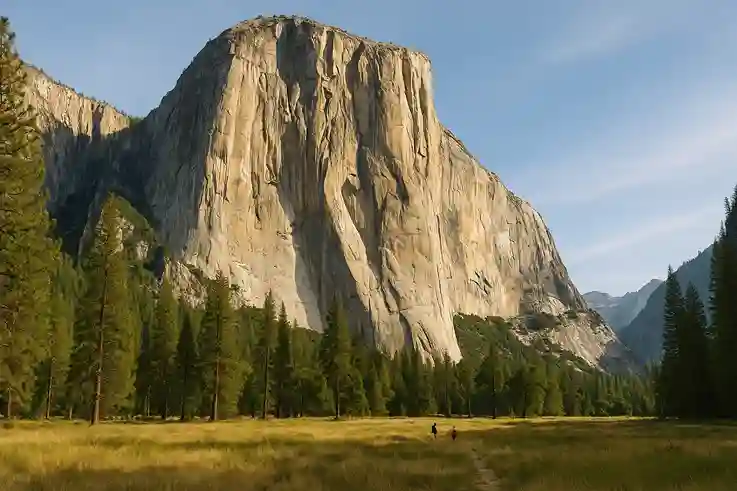
Why Visit
Located in California’s Sierra Nevada Mountains, Yosemite National Park is a crown jewel of the U.S. national park system and one of the best US national parks. Renowned for its towering granite cliffs, soaring waterfalls, and ancient giant sequoia trees, Yosemite is a dream destination for photographers, hikers, climbers, and nature lovers. Iconic landmarks like El Capitan and Half Dome rise dramatically from the valley floor, attracting rock climbers from around the world, while hundreds of miles of scenic trails lead to alpine lakes, meadows, and panoramic viewpoints. Whether visiting for a weekend or a week, Yosemite’s unmatched natural beauty and serene wilderness make it a must-see destination in the USA.
Top Attractions
Half Dome
A legendary granite formation in Yosemite National Park, one of the best US national parks, offering a challenging hike accessible via permit or stunning views from Glacier Point for a less strenuous experience.
El Capitan
A 3,000-foot vertical rock face in Yosemite National Park, one of the best US national parks, renowned worldwide for rock climbing and offering a breathtaking view from Yosemite Valley.
Yosemite Falls
One of the tallest waterfalls in North America, located in Yosemite National Park, one of the best US national parks, especially spectacular in late spring when snowmelt swells the river.
Best Time to Visit
Late spring to early summer (May–June) for waterfalls at their peak, or fall (September–October) for fewer crowds and colorful foliage. Winter offers a peaceful, snow-covered Yosemite experience.
Here’s the official link to Yosemite National Park
Zion National Park (Utah)
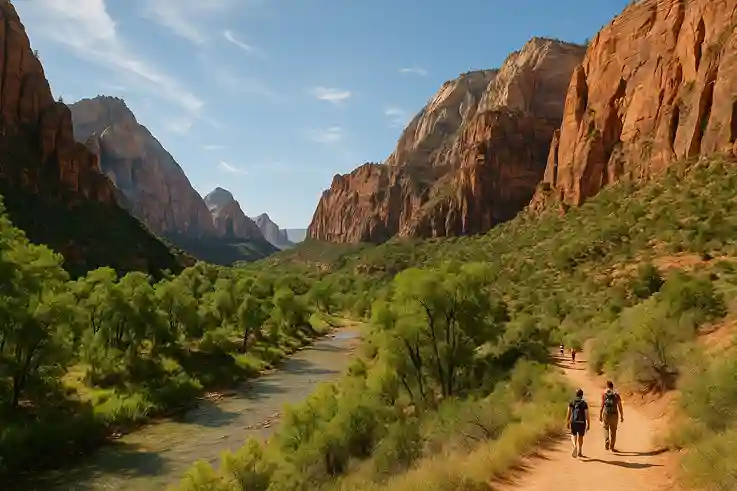
Why Visit
A true gem of the American Southwest, Zion National Park is renowned for its towering sandstone cliffs, dramatic red rock landscapes, and thrilling hiking trails that appeal to both adventurers and nature lovers. Located in southern Utah, Zion offers a striking contrast of deep canyons and lush river valleys, all framed by the vibrant hues of desert terrain. It’s a paradise for hikers, photographers, and outdoor enthusiasts looking to explore narrow slot canyons, towering monoliths, and scenic vistas. From adrenaline-pumping ascents to peaceful riverside strolls, Zion delivers unforgettable experiences in every season.
Top Attractions
- Angels Landing – One of the most famous (and daring) hikes in the U.S., featuring steep switchbacks and chains for support on the final ridge. A permit is now required due to popularity and safety concerns.
- The Narrows – A unique hike through the Virgin River between towering canyon walls. Wear proper footwear and check water levels before starting.
- Zion Canyon Scenic Drive – A must-see route offering access to many trailheads and jaw-dropping canyon views. Shuttle service operates in peak season to limit traffic.
Best Time to Visit
Spring (April–May) and fall (September–October) offer mild temperatures and vibrant colors. Summer can be extremely hot, while winter provides a quieter, more serene experience.
Acadia National Park (Maine)
Why Visit
Perched along the rugged coastline of Maine, Acadia National Park is a stunning blend of mountains, forests, and Atlantic shoreline, offering a uniquely East Coast outdoor experience. It’s one of the most beloved national parks in the northeastern United States, known for its granite peaks, rocky beaches, and picturesque coastal views. Acadia is perfect for travelers looking to combine hiking, cycling, and scenic drives with charming small-town vibes, especially in nearby Bar Harbor. Whether you’re watching the sunrise from Cadillac Mountain or enjoying a peaceful paddle on Jordan Pond, Acadia offers the perfect balance of adventure and relaxation.
Top Attractions
- Cadillac Mountain – The highest point on the U.S. East Coast, and the first place to see the sunrise in America during certain parts of the year.
- Jordan Pond – Known for its crystal-clear waters and the iconic Jordan Pond House, where you can enjoy tea and popovers with a view.
- Park Loop Road – A 27-mile scenic drive that showcases the park’s best features, including ocean views, cliffs, lakes, and mountain landscapes.
Best Time to Visit
Late spring through early fall (May–October) is ideal. Autumn is especially spectacular, with vibrant fall foliage making it one of the best leaf-peeping destinations in the U.S.
Glacier National Park (Montana)
Why Visit
Often called the “Crown of the Continent,” Glacier National Park is a spectacular wilderness area in Montana known for its pristine alpine lakes, rugged mountain peaks, and vast meadows filled with wildflowers. With over 700 miles of hiking trails, Glacier offers endless opportunities for adventure, whether you’re seeking challenging backcountry treks or gentle walks with stunning views. Wildlife enthusiasts can spot mountain goats, bears, and bighorn sheep, while photographers will be captivated by the park’s crystal-clear lakes and dramatic glaciers. The park’s remote beauty and well-preserved ecosystem make it one of the most breathtaking national parks in the USA.
Top Attractions
- Going-to-the-Sun Road – This iconic 50-mile scenic drive traverses the park’s most dramatic landscapes, crossing the Continental Divide with jaw-dropping views at every turn.
- Lake McDonald – The largest and most accessible lake in the park, known for its clear waters and beautiful shoreline hikes.
- Grinnell Glacier – A popular hiking destination offering close-up views of one of the park’s remaining glaciers amidst spectacular mountain scenery.
Best Time to Visit
Mid-June to mid-September provides the best access to trails and roads, as much of the park is snowbound in winter. Early summer offers wildflowers, while fall brings colorful foliage and fewer crowds.
Here’s the official link to Glacier National Park
Rocky Mountain National Park (Colorado)
Why Visit
Nestled in the heart of Colorado, Rocky Mountain National Park is a haven for outdoor enthusiasts, offering some of the most spectacular mountain scenery in the United States. With towering peaks soaring over 14,000 feet, pristine alpine lakes, and abundant wildlife, this park is a paradise for hikers, photographers, and nature lovers alike. Whether you’re driving along the famous Trail Ridge Road—the highest paved road in North America—or exploring peaceful trails around crystal-clear lakes, Rocky Mountain National Park offers an unforgettable blend of adventure and tranquility. Keep an eye out for elk, mule deer, and bighorn sheep that roam freely throughout the park.
Top Attractions
- Trail Ridge Road – A scenic 48-mile drive that climbs above the tree line, providing panoramic views of the Rockies and surrounding valleys.
- Bear Lake – A popular and easily accessible trailhead leading to serene alpine lakes and waterfalls, perfect for families and casual hikers.
- Emerald Lake – A stunning turquoise lake surrounded by rugged peaks, accessible via a moderate hike from Bear Lake.
Best Time to Visit
Summer (June to September) offers warm weather and open roads, while fall brings vibrant foliage and fewer visitors. Winter is ideal for snowshoeing and cross-country skiing but many roads close due to snow.
Great Smoky Mountains National Park (Tennessee, North Carolina)
Why Visit
As the most-visited national park in the United States, the Great Smoky Mountains National Park offers a magical blend of mist-covered mountain ranges, rich biodiversity, and historic Appalachian culture. Spanning the border between Tennessee and North Carolina, this park is famous for its dense forests filled with wildflowers, black bears, and over 19,000 documented species of plants and animals, making it a paradise for nature lovers and wildlife watchers. The park also preserves numerous historic cabins, mills, and churches that provide a glimpse into the region’s pioneer past. Whether you’re hiking scenic trails, driving through picturesque valleys, or exploring charming mountain communities, the Smokies offer a peaceful escape year-round.
Top Attractions
- Clingmans Dome – The highest point in the park with a paved trail leading to an observation tower that offers panoramic views of the surrounding mountains.
- Cades Cove – A scenic valley known for its abundant wildlife and well-preserved historic buildings, perfect for cycling and wildlife spotting.
- Roaring Fork Motor Nature Trail – A one-way scenic drive through lush forests and rushing streams, dotted with historic cabins and hiking trailheads.
Best Time to Visit
Spring brings vibrant wildflowers, while fall offers stunning foliage colors from mid-September to October. Summer is popular but can be crowded; winter is quieter with some areas less accessible.
Olympic National Park (Washington)
Why Visit
Olympic National Park is a unique treasure located in Washington State, offering an extraordinary mix of ecosystems all within a single park. From rugged mountain peaks to ancient temperate rainforests and pristine Pacific coastline, Olympic showcases unmatched natural diversity. Visitors can hike through moss-draped forests, explore dramatic alpine meadows, and stroll along wild sandy beaches, all within a few hours’ drive. This park is perfect for adventurers who love a variety of landscapes and want to experience the Pacific Northwest’s rich biodiversity and stunning scenery in one place.
Top Attractions
- Hurricane Ridge – A popular spot offering panoramic views of the Olympic Mountains, alpine wildflowers, and accessible hiking trails suitable for all skill levels.
- Hoh Rainforest – One of the largest temperate rainforests in the U.S., known for its lush greenery, towering old-growth trees, and moss-covered trails.
- Ruby Beach – A dramatic coastline with sea stacks, tide pools, and stunning sunsets that make it a favorite for photographers and beachcombers alike.
Best Time to Visit
Summer (July to September) is ideal for hiking and beach visits with mild weather. Spring and fall are quieter with beautiful seasonal changes. Winters bring rain and storms but showcase the park’s wild, rugged side.
Arches National Park (Utah)
Why Visit
Famous for its incredible collection of more than 2,000 natural stone arches, Arches National Park is a stunning showcase of red rock landscapes and unique geological formations. Located in south-eastern Utah, this park offers surreal views of delicate sandstone structures shaped by millions of years of erosion and weathering. Whether you’re hiking to the iconic Delicate Arch, exploring the expansive Devil’s Garden, or marvelling at the dramatic Landscape Arch, Arches delivers an unforgettable desert adventure. The vibrant colors, endless photo opportunities, and easy access make it a favourite destination for families, photographers, and outdoor enthusiasts.
Top Attractions
- Delicate Arch – The park’s most famous and photographed arch, accessible via a moderately challenging hike with rewarding panoramic views.
- Landscape Arch – One of the longest natural arches in the world, located along the Devil’s Garden Trail.
- Devil’s Garden – A scenic area with multiple arches and rock formations, offering hiking trails of varying difficulty for all visitors.
Best Time to Visit
Spring (March to May) and fall (September to November) are the best times to visit, offering mild temperatures and fewer crowds. Summer can be extremely hot, so plan accordingly.
Conclusion On Best US National Parks
From the rugged coastlines of the East to the towering peaks of the West, these top national parks in the USA offer something for every type of traveler. Whether you’re planning a scenic road trip, a fun-filled family vacation, or a peaceful solo escape into nature, these iconic parks promise unforgettable adventures, stunning landscapes, and rich wildlife encounters. So pack your bags, lace up your hiking boots, and get ready to explore the very best that America’s national parks have to offer!
FAQ: Best US National Parks

Michael Reyes is a versatile blogger with a primary focus on farming and sustainable living. Growing up close to nature, he developed a deep interest in agriculture and enjoys sharing practical tips on backyard farming, modern cultivation techniques, and eco-friendly practices. While farming remains his specialty, Michael also writes on a wide range of topics, from lifestyle and travel to everyday inspiration, making his work relatable to a broad audience.
Outside of writing, Michael enjoys spending time outdoors, experimenting with new farming methods, and exploring different cultures through food and travel. His approachable voice and well-researched insights make his blogs both informative and engaging.

